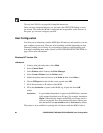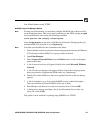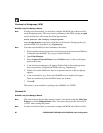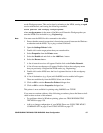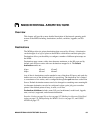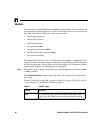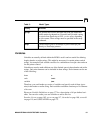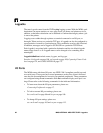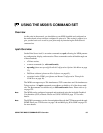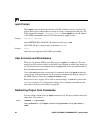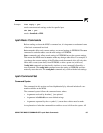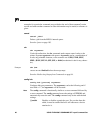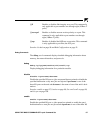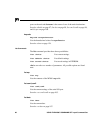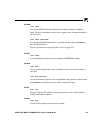
92 M208 INTERNAL ARCHITECTURE: Logpaths
unit
host
Logpaths
The term logpath comes from the UNIX syslog logging system. With the M208, each
destination can report statistics on: user, page count, job name, and printer errors. In
addition, a checksum calculation can be obtained to confirm data integrity when a job
is sent to the printer.
Logging occurs either through a printer or terminal connected to an I/O port, or
through a Telnet session to a particular TCP port. A logpath can also be configured to
report statistics via email to a particular user. This can then be saved to a file if desired.
In addition, messages can be logged to SYSLOGD on a particular TCP/IP host.
Each logpath is associated with a particular destination and the six default logpath
names range from l1 to l6. Logpath names can be changed to be something more
meaningful.
Logpath definitions include: name, log port, and log type.
See also: list logpath on page 100, set logpath on page 108, Capturing Printer Feed-
back on page 134, and USING NPWIN on page 127.
I/O Ports
The M208 comes with three I/O ports: one IEEE 1284-I compliant parallel port and
two serial ports. These ports have several parameters such as flow control and baud
rate, that can be manipulated to best suit your attached peripherals. These parameters
are configured using the set commands while list commands display each port’s set-
tings. Please refer to the following commands for the indicated information:
• To learn more about the I/O port parameters, please see:
Connecting Peripherals on page 17.
• To look at current I/O port settings, please see:
list com1|com2 on page 98 and list prn on page 100.
• To change I/O port settings, please see:
set com1|com2 on page 105 and set prn on page 112.



